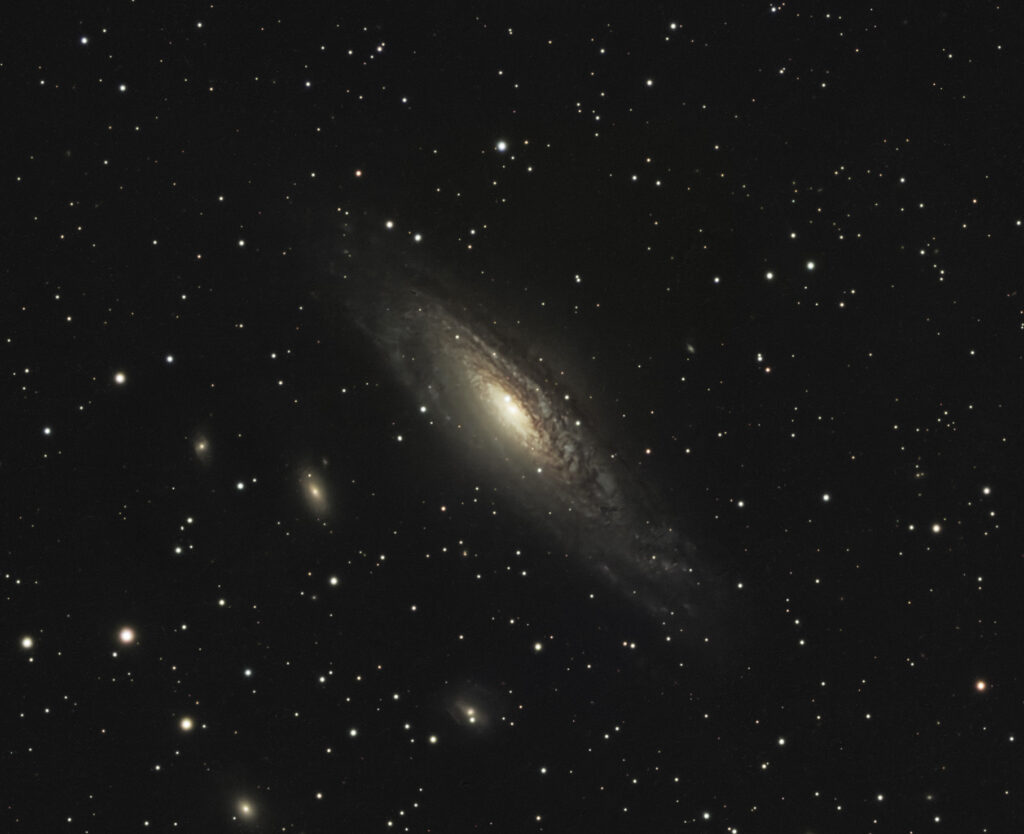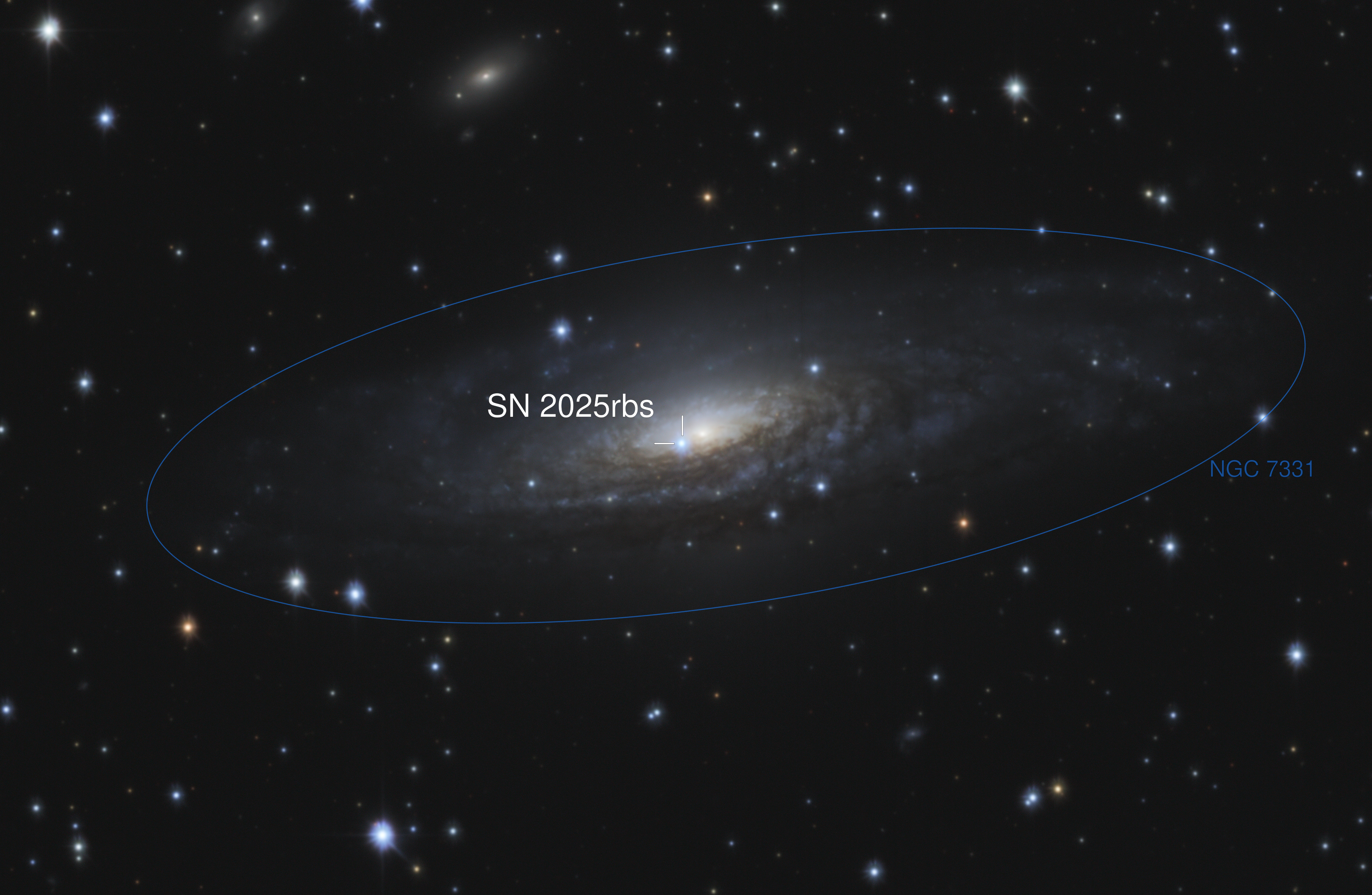Mount Tirup fångar nyaste supernovan
Apropå Knut Lundmark och supernovorna rapporterar Ronnie Svensson om “den senaste snackis-supernovan” SN2025rbs i NGC7331. Bilden togs natten till onsdagen denna vecka.
– Som brukligt, fotograferad från Mount Tirup genom ett 14 tums SCT, dock denna gång fångad med en nyförvärd, en mono CMOS fullformatskamera från Touptek. Jag önskar jag kunde fått med mer detaljer i bilden, men lyckades bara fånga fotoner under en och en halv timme. Men supernovan syns likväl klart och tydligt kl halv 12 strax utanför galaxens centrum.

Lundmark hade varit förvånad över (eller inte) att en amatörastronom utanför Lund kunnat fotografera denna praktfulla stjärnsmäll.
Tips: På SAAF-sajten Nattmolnet finns en del andra studier av amatörkolleger till Ronnie.
Om vi kikar in på GOTO:s web står där följande att den upptäcktes 14 juli i Pegasus stjärnbild och klassas som en supernova av typ Ia. Galaxen ligger ca 40 miljoner ljusår bort. Magnituden vis runt 11-12 idag.
Från GOTO-sajten saxas följande bild (mera vågrät och vänd än Ronnies) och text på engelska:

SN 2025rbs and its host galaxy NGC 7331. Image is a composite of observations taken in the GOTO L and Sloan g, r, and i bands by TwIST
A discovery magnitude of 17 in the GOTO L-band meant that 2025rbs was easily observable for spectroscopic follow-up and it was quickly classified as a type Ia supernova, making it the fourth confirmed, and the first thermonuclear, supernova discovered in NGC 7331.Type Ia supernovae like 2025rbs typically reach a peak brightness around magnitude -19.3, which at the distance of NGC 7331 would result in an apparent magnitude of ~11. This is bright enough to be seen visually through telescopes with apertures >70 mm, however the proximity of the supernova to the core of NGC 7331 makes it more of a challenge.
Since discovery it has quickly become the brightest supernova in the sky as of the 25th of July, with the latest measurements placing it around magnitude 12. A large amount of spectroscopic and photometric data is also being collected by both professional and amateur astronomers and we are excited to continue to observe 2025rbs as it evolves.